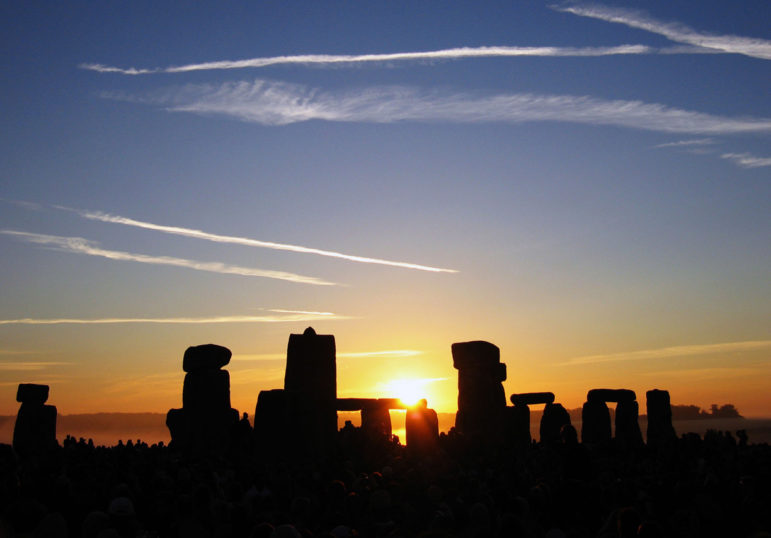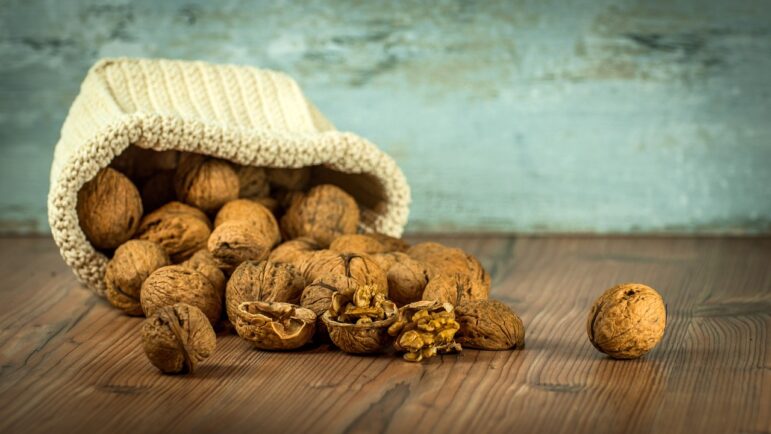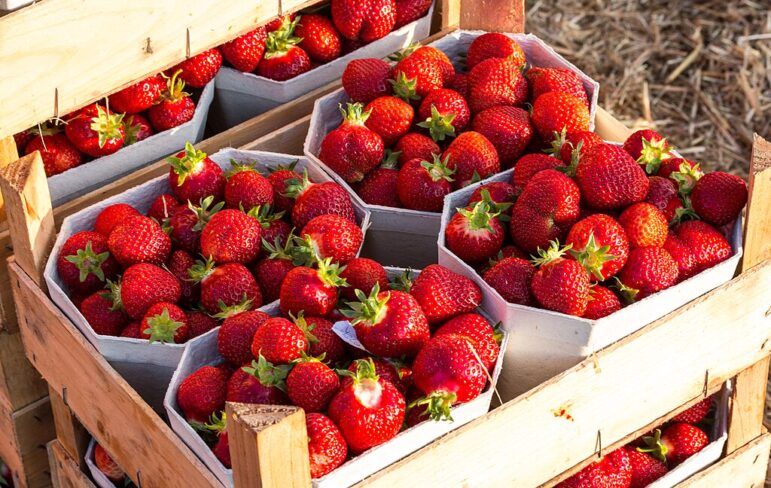
There’s something about the solstices that seems to connect with a deep, fundamental part of the human psyche – something that only becomes more pronounced the further we move away from the equator and the imbalance between day and night becomes more extreme. The solstice is a moment where the world seems to hold its breath, the sun hung motionless overhead or hidden below the horizon, before it dives across the threshold of one side of the year to the other: light to dark and dark to light.
We can see this recognition and connection in the neolithic monuments of our ancestors, and how they mark the rise and fall of the sun on the longest and shortest days of the year, and we can see it in the recurring creation of new solstice celebrations as shifts in religion outlaw the old ones. The solstices call to us, and the summer solstice in particular calls us outside, to celebrate life and everything the earth has to offer together.

CC BY-SA 2.0, https://commons.wikimedia.org/w/index.php?curid=195581
In the northern hemisphere, summer solstice celebrations in are a rich tapestry of Christian and local pre-Christian practices, bound together by the early church’s habit of syncretisation and then left to meld and evolve over the next 1500 years. Though each region’s approach to the solstice has its own unique character, fire, water, food, fertility, and communal celebration are usually all present to one degree or another.
Oh, and lots and lots of alcohol – but then that’s a given for almost every event or festival in the parts of Europe that don’t have a cultural prohibition against it rather than something unique to the solstice.
Tied to the feast day of St. John the Baptist in most of Europe, there’s some debate as to whether the watery elements of summer solstice traditions are derived from that, or if the church assigned his festival to the solstice to try and redirect them in a more godly fashion.
Similarly, the incredible mountain fires that are lit in Austria every year, arranged to form shapes and designs visible from the ground below, are attributed variously to the medieval cult of the Sacred Heart and a pre-Christian Alpine cult of the sun that the church tried to erase with the former. I’m not going to try and legislate on that because, unless some very illuminating (I didn’t mean that pun, but I’m sticking with it) manuscripts suddenly surface from the Vatican archives, there just isn’t enough evidence to provide a definitive answer. I would also argue that it doesn’t really matter which came first, because either way one has certainly influenced the other.
We can easily see this Christo-pagan syncretism at work in places like Spain, where revellers jump over bonfires and then bathe in the sea to purify themselves for the year and ward off evil spirits. One of these things can be connected to St. John and the church; the other, not so much.
Seeking this sort of protection during the summer solstice isn’t just limited to Spain. Seen as a particularly liminal time, one where the supernatural is unusually present, and the fairies, in regions that acknowledge them, are especially powerful, the summer solstice is a traditional moment to seek protection against them, both for that night and throughout the year to come. The ubiquitous bonfires, little echoes of the sun on earth, are a key part of this, with burning effigies, leaping over the flames, and storing and using the ashes over the year all traditional ways to invoke protection. Similarly, bathing, in the ocean or morning dew, are common means of protection and purification found across Europe. Another very common method is gathering St. John’s Wort (syncretism again) and carrying it about your person, or placing it under your pillow.
But what about food? This is, after all, a food column. Well, fertility, of the land and people, is an integral part of many solstice celebrations, as is the huge bounty of food available at this time of year. Add in that annual celebrations always ending up developing their own food traditions, even if it’s not a food focused festival, and there are so many different, delicious ways to celebrate the magic of the shortest night to choose from.
Walnuts
In Italy the summer solstice is a traditional time to gather green walnuts and make nocino, a walnut liqueur that’s drunk on the winter solstice. Walnut trees were associated with Witches in Italy. It was believed that they’d gather under walnut trees to make their potions on the summer solstice, forcing the walnut gatherers (usually young virgin women) to compete with them. If you want to embrace your Witchy nature on the night of the solstice, then eating walnuts seems like an excellent way to do that, whether or not you also try making some nocino for yourself.

Walnuts [LubosHouska, Pixabay]
Walnut Praline
- 2 cups of walnuts
- 100g caster sugar
Toast the walnuts on a baking tray (don’t forget to line it with greaseproof paper) for five to 10 minutes at 375 F/190 C. Watch them carefully during this because walnuts burn quickly, take the tray out of the oven as soon as they start to brown and give off a toasty smell.
Melt the caster sugar slowly in a pan over a medium heat. Do not stir until all of the sugar is dissolved because if you do you’re going to end up with crystalised chunks instead of a smooth caramel, if it looks like it’s melting unevenly, shake the pan gently instead.
Once you have a smooth caramel syrup add the walnuts and stir to coat them before putting them back onto the greasproof paper to set, making sure to separate them out so they don’t stick together.
Strawberries
What better way to celebrate the bounty of the earth at Midsummer than through some wonderful, juicy strawberries? Strawberries out of season are completely pointless, tasting mostly of sour water with no flavour at all. Seasonal strawberries, grown outside instead of in polytunnels, are a little burst of magic on your tongue.
An essential component of Scandinavian Midsummer feasts, taking pride of place in the Strawberry Midsommer Cake or standing alone, perhaps with some fresh cream on the side, you can’t go wrong by including them on your table.
Like the spiced tea I make on the winter solstice, mindfully eating a strawberry, experiencing all the sensations involved and silently expressing the immense gratitude we should all feel towards the earth can be a great way to connect to the time of year. (And then make sure you remember the fruit pickers and other migrant farm workers who bring grow our produce, and advocate for them in the year to come.)

Harvest at a strawberry field in the Dernekamp hamlet, Kirchspiel, Dülmen, North Rhine-Westphalia, Germany (2015) [Dietmar Rabich, Wikimedia Commons, CC 4.0]
Midsommartårta
- 40g unsalted butter
- 3 large eggs
- 75 g sugar
- 65 g self rising flour
- 10 g cornflour
- Whipped cream
- 2 punnets of strawberries
Pre-heat the oven to 350F or 176 C. Melt the butter and set it aside to cool. Sift the flour and cornstarch carefully to make sure there’s no lumps.
Beat the eggs and sugar until they’ve tripled in volume and then left the beater to see if a ribbon of batter forms and clings to it for at least 3 seconds, if so, then it’s ready. Gently fold half of the flour into the egg and sugar mixture, then slowly pour and mix in half the butter, before repeating both steps until everything is mixed together.
Line two six inch cake pans with parchment paper and divide the batter between them, then bake in the pre-heated oven for 22 – 25 minutes (start checking on them around 22 unless you know your oven bakes slowly). Let them cool on a cake rack before the next step.
Spread a layer of whipped cream on one of the cakes and then layer sliced strawberries over it. Put the other cake on top and then spread more of the cream on top of that before decorating the top with whole or sliced strawberries, and edible flowers if you’re feeling fancy.
Milk
In some parts of Europe milk is left as an offering to river spirits during the summer solstice, to placate them and keep from taking and drowning human beings instead. In Connaught it’s also the star of a traditional dish called Goody, that’s made in a cauldron over one of the Midsummer bonfires that night.
Goody
- Equal parts brown bread and milk
- Honey or sugar to taste
- Cinnamon
- Nutmeg
Add the milk and bread to a cauldron (and don’t worry, you if don’t have one of these or a handy bonfire to hang it over available, a saucepan on the stove top is just as good) and put on a medium heat until the milk starts to boil. Stir continuously until the texture is homogenised and then add your preferred sweetener and spices to taste.
The Wild Hunt is not responsible for links to external content.
To join a conversation on this post:
Visit our The Wild Hunt subreddit! Point your favorite browser to https://www.reddit.com/r/The_Wild_Hunt_News/, then click “JOIN”. Make sure to click the bell, too, to be notified of new articles posted to our subreddit.